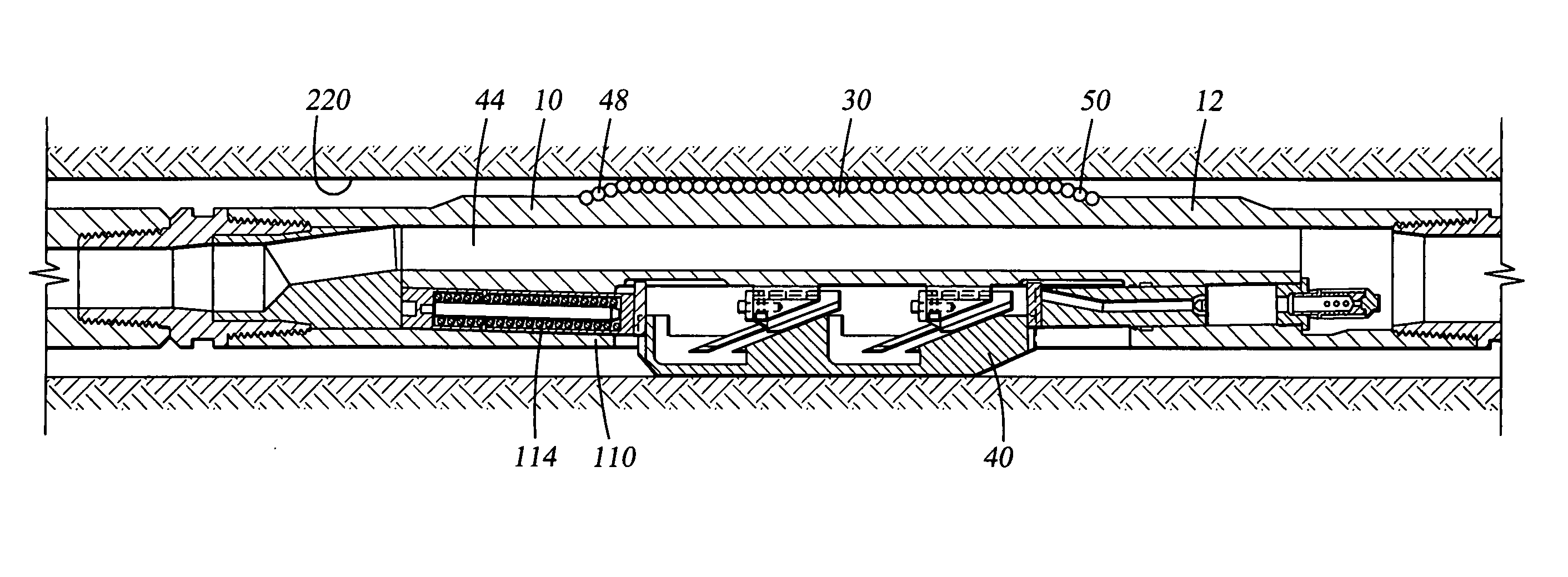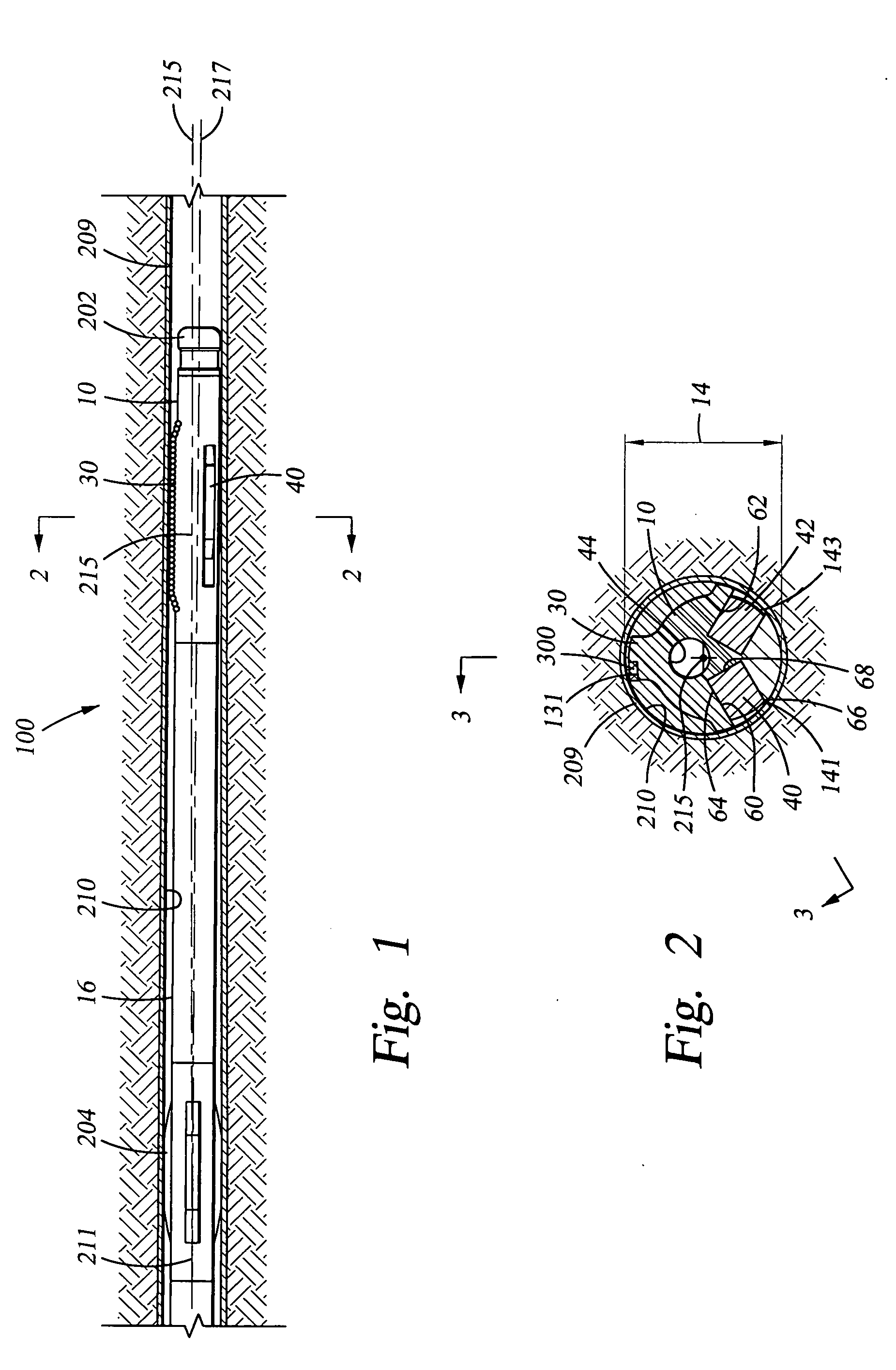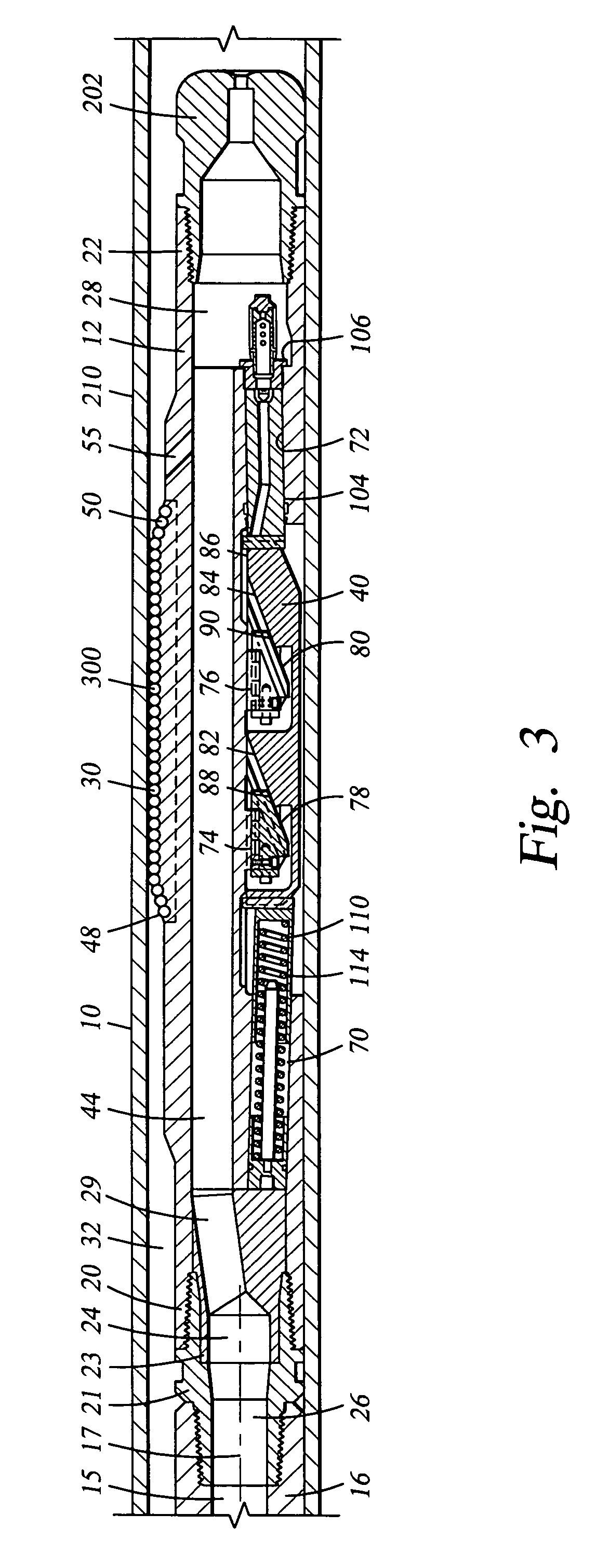Apparatus and method for drilling and reaming a borehole
a technology for reaming apparatus and boreholes, which is applied in the direction of drilling pipes, directional drilling, cutting machines, etc., can solve the problems of increasing the time and cost required to drill the borehole, and reducing the accuracy of drilling. the effect of reaming the diameter of the reamer
- Summary
- Abstract
- Description
- Claims
- Application Information
AI Technical Summary
Benefits of technology
Problems solved by technology
Method used
Image
Examples
Embodiment Construction
[0017] The embodiments described herein provide a drilling assembly useful in various applications. A first embodiment includes a pilot bit and an eccentric, adjustable diameter reamer above the pilot bit. The assembly may be passed through an existing borehole (cased or opened) and employed to drill at a diameter that is larger than the diameter of the hole above.
[0018] Certain embodiments described herein include a fixed blade and at least one extendable member that can be extended to adjust and enlarge the diameter of the reamer. Once the assembly has been passed beneath the existing borehole, with its extendable members in the contracted position, the members can then be extended and the assembly rotated to form a larger diameter borehole. The extendable members may be elongate blades or other structures, such as pads or pistons. It is desirable that a plurality of cutter elements be mounted on one or more of the blades of the reamer so as to ream the borehole formed by the pil...
PUM
 Login to View More
Login to View More Abstract
Description
Claims
Application Information
 Login to View More
Login to View More - R&D
- Intellectual Property
- Life Sciences
- Materials
- Tech Scout
- Unparalleled Data Quality
- Higher Quality Content
- 60% Fewer Hallucinations
Browse by: Latest US Patents, China's latest patents, Technical Efficacy Thesaurus, Application Domain, Technology Topic, Popular Technical Reports.
© 2025 PatSnap. All rights reserved.Legal|Privacy policy|Modern Slavery Act Transparency Statement|Sitemap|About US| Contact US: help@patsnap.com



